#kill the patriarchy
Text
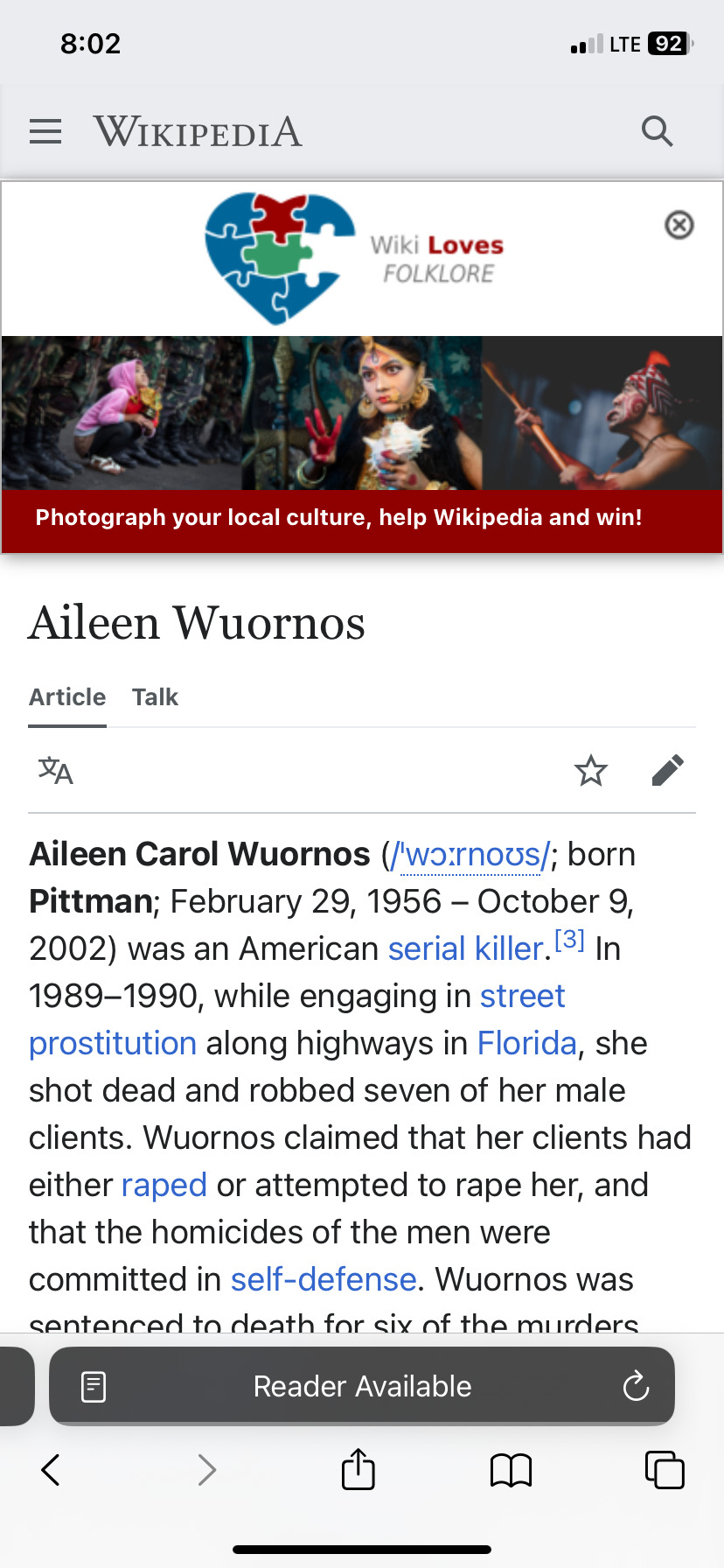
Hot girls worship aileen wuornos
#aileen wuornos#anti prostitution#anti sex industry#anti sex trade#anti sex trafficking#anti sex work#fuck men#kill all predators#kill all males#kill the patriarchy#kill rapists#kill men#feminist
28 notes
·
View notes
Text
Rant about TikTok and sexism, and also a rant about feminism and Islamophobia at the end
I fear nothing, but that... Thing.
*TikTokers trying to make sexism trendy again*
It scares me-
I LITERALLY JUST WENT ONTO TIKTOK FOR THE FIRST TIME IN A YEAR AND THE FIRST THING I GET WAS THIS GIRL BEING LIKE "Heeeeyyyy just remembered that you were meant to be cattle for the patriarchy! Women are always supposed to be weak and bear children! 🤪😝" AND I LITERALLY BLOCKED HER SO QUICKLY-
HELL NO IF SOMEONE TRIES TO GET ME TO SUBMIT TO THE PATRIARCHY I WILL LITERALLY BE CHARGED WITH MULTIPLE FELONIES!
Anyways if you support any form of sexism stay the fuck away from me.
Oh, and Radfems and TERFS, just because I'm anti-Sexism, don't assume my blog is a safe space for you, because it isn't. My blog is also not a safe space for Islamophobes.
Smh most feminists will see a Muslim women wearing a hijab and be like "Oh you poor thing! Are you being forced to wear that? Just take it off!" Like... No, it's literally their religion? I had a best friend who was Muslim and she was so happy with her hijab and everyone just kept killing her happiness by trying to yank it off her and they had the AUDACITY to wonder why she was upset afterwards.
Sorry for ranting, I'm just very pissed off at multiple things right now.
#crystalsandbubbletea#crystals rants#crystal rants#bubble tea rants#bubble rants#tea rants#rian rants#rant post#Things like this makes me remember why I am never on TikTok anymore#anti sexism#anti patriarchy#kill the patriarchy#patriarchy is dead#sexism is dead#kill sexism#fuck islamophobia#islamophobia is a crime#islamophobes dni#radfems dni#terfs dni#sorry for the rant
2 notes
·
View notes
Text

[Image ID: A Spotify notification: Have friends heard your playlists? kill the patriarchy!!!!!!. This might be a good one to share with them. Tap to go to it. End Image ID.]
Best Spotify notification I’ve ever gotten. If anyone wants said playlist: here she is
#spotify#spotify playlists#kill the patriarchy#kill all men#down with patriarchy#music#salem says#image described
12 notes
·
View notes
Text
My Dad got angry because I said I refuse to beg any man for something
3 notes
·
View notes
Text
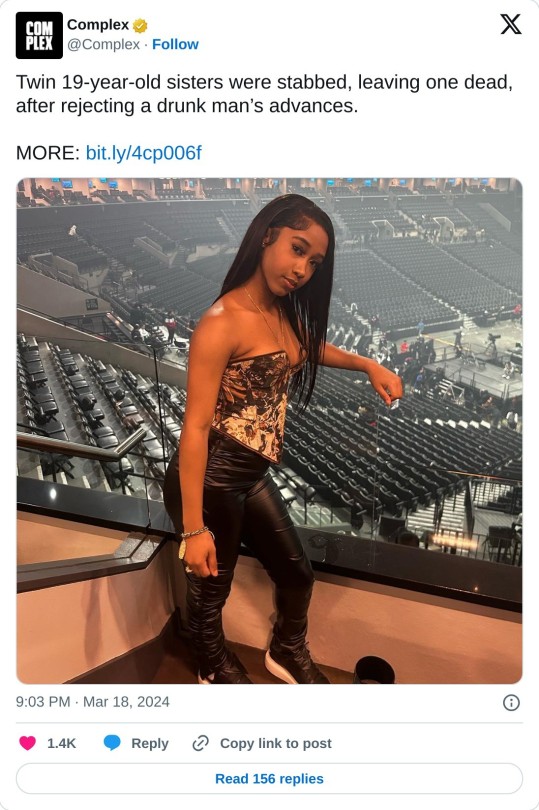
Her name was Samiya and she was brutally stabbed in the neck and chest before she was taken to a New York hospital with her sister Sanyia (who had been stabbed in the arm), where she did not survive her injuries from her neck and chest. These sisters were just at a store, and this predator FOLLOWED them after he was rejected and attacked them. He waited for them -and he's still not caught. This is just absolutely horrifying.
Misogyny fuels violence against women -and this very clear epidemic is killing young girls and women.
I cannot imagine the degree of entitlement you think you have to anyone's time and bodies- that anyone could hold that much disdain for rejection, and is okay with exerting power, control, and violence upon another person because YOUR ego is bruised. Fuck toxic masculinity and dismantle the patriarchy until it burns to the ground because I'm so sick of seeing this.
I wish all the best to the family and loved ones of Samiya. This young teenager should still be here. And I hope the man who did this gets apprehended and faces endless misery and misfortune in his lifetime.
#feminist#social justice#feminism#misogynoir#protect black women#protect black girls#misogynistic#misogyny#misogyny kills#systemic oppression#male entitlement#smash the patriarchy#current events#current news#united states#brooklyn#new york#us news#tw stabbing
3K notes
·
View notes
Text
yeah ok i get it you don’t think transandrophobia exists but you do realize that it’s still bad to be shitty to transmascs right? you get that right?
#like you don’t get to be transphobic just bc you say ‘well they’re men so men can’t be oppressed’#as if if there is never any intersection of identities that includes being a man#like first think of gay/bi men they experience a different kind of oppression than queer women do and it would be idiotic to argue that#them being men has NOTHING to do with the oppression they face#and then there’s black and brown men who are constantly painted as scary and violent in news and media and are disproportionately killed#by police officers#and you’re telling me that has NOTHING to do with how their identities intersect between being a POC and a man. ok#it makes no sense to me because look#obviously we live under the patriarchy which systematically oppressed women as well as anyone who deviates from#the cisheteronormative white masculine ideals and i’m by no means trying to say that ‘men have it harder’#it just seems a bit ingenuine to argue that UNDER NO CIRCUMSTANCES CAN A MAN FACE OPPRESSION DUE TO THE INTERSECTION OF ANOTHER#MARGINALIZED IDENTITY#transandrophobia#transgender#transmasc#trans masc#trans man#transphobia
130 notes
·
View notes
Note
It's so frustrating to see people purposefully misunderstand transandrophobia/transmisandry and then very confidently talk disparagingly about the people who talk about their experiences of it and then blatantly ignore everyone going "hey yeah no that's not what that means"
Like. Devon price trying to frame it like people who talk about transandrophobia are doing so firstly because they're just ignorant misogynistic babies who want to be oppressed so bad and also to try and drive a wedge between transmascs and transfemmes is so fucking disingenuous I don't even know where to start.
We're literally just trying to talk about the experiences transmasculine people have and the institutional problems specific to us? Why is this such a fucking problem?
Its painfully obvious that the people who make these posts do not ever actually engage with the discussion of anti-transmasculinity & the wider transunitist-feminist theories. Its embarassingly obvious in this case because Devon tried to make this sick gotcha, by bringing up one of the most common topics of conversation in our spaces.
And then there's the whole "TMRAs don't realize most of what they deal with is misogyny!" take, which I've seen in other places as well. Which imo comes from the idea that people who discuss transmisandry are literally just the trans version of MRAs. & the MRA idea of "misandry" is just a reversal of their idea of feminist theory- so they use it to describe "actually society is based around women's needs and desires and it targets (cis) men and we actually live in a matriarchy!" While the transunitist concept of misandry/antimasculism is "patriarchal beliefs about men/masculinity & the roles they are expected to fulfill, used both generally to reinforce patriarcharal control and specifically to target marginalized men/perceived-masculine people." I coined antimasculism specifically to provide an alternate to misandry for those who are uncomfortable with it because of the MRA associations.
& like. whether or not you agree that these are useful words, its obvious that the transunitist idea of misandry/antimasculism is very different to the MRA one. But to know that you'd have to actually, like, read the things we write & take seriously to our theories on the patriarchy. And not just trust Tumblr Callout For Evil Trans People #3245853723 that said we don't think misogyny exists.
Also tbh I think a bigger part of this issue (transmascs who are anti-transunitist) is that its a symptom of anti-transmasculine erasure. If you don't personally experience, assault, demonization, or accusations of being a predator for being a trans man, and no one you know has either, then... you certainly aren't gonna hear about those issues from wider society. And even if you have, you might not recognize what happened as anti-transmasculine, or tell yourself it must be only a fraction of what trans women go through. & again, they don't fucking read anything we post. That's why I feel like its so important to point out & remember incidents of anti-transmasculinity (like what I do w the AoVaTP). Because its so easy to buy the "people don't violate trans men the same way" until you've read about (tw for somewhat graphic anti-transmasculine violence)
trans men getting their faces cut off, beaten with a chain, thrown out of men and women's bathrooms, hit over the head with a cooler, having their shelter at a refugee camp firebombed, having hot coffee poured in their eyes while being called a "he-she", institutionalized & tortured for not showing "proper gender behaviors" as a child, having their family burn their documents to keep them from getting a job, forced to jump from a 2nd-story window and left to die, being harassed by Fox News for being a "groomer" until their school got bomb threats, held captive and tortured for two years, found dead with their genitals stabbed, assaulted by a police officer for "lesbian activity", called "tranny" a lot, and so many rapes and so many suicides, and this is just some of the shit that I have collected for that archive.
But yeah. We're just whining about silly representation nonsense.
#sorry for bringing up all the awful shit but like. sometimes i just wanna grab these peoples faces#and be like WHILE YOU NITPICK LANGUAGE THE PATRIARCHY DOESNT STOP KILLING US#i try to pretty regularly search for news articles about trans men to keep up w anything new#and ive done a fair bit of research to find stories that NEVER!!!!! get brought up by other queer activists#wheres yalls fucking support for zahair martinez. for chriton atuhwera. for ky peterson. for ebeng mayor.#if you are an activist then put the effort in#m.#ask box#examples of transandrophobia#rape tw#suicide tw
285 notes
·
View notes
Text
my toxic trait is that i support every women who kill men in criminal minds
#criminal minds#elle greenaway#megan kane#women apologist#let women be evil#let them kill misogynistic men#they didnt do anything wrong#fuck the patriarchy
183 notes
·
View notes
Text
I apologize on behalf of those who have perpetuated such harmful actions and attitudes towards women. I recognize that the marginalization and subjugation of women is an ongoing issue that has pervaded societies for centuries and has caused immeasurable pain and suffering. I acknowledge the need to take responsibility, not only for the actions of individuals but also for the structures and attitudes that enable and encourage misogyny, sexism, and the objectification of women.
I understand the importance of listening to and amplifying women's voices, helping to build and participate in safe spaces for them, and working towards the eradication of gender bias and prejudice in all areas of life. I pledge to reject all forms of toxic masculinity and to work towards creating a more inclusive, equal, and just society where all people are respected and treated with dignity and fairness.
Over the centuries, males and patriarchal systems have inflicted various forms of harm upon women, including but not limited to:
1. Violence: Women have been subjected to physical, emotional, and sexual violence by men, including domestic violence, rape, sexual assault, and harassment.
2. Discrimination: Women have been discriminated against in various areas of life, including education, employment, politics, and the legal system.
3. Objectification: Women have been objectified by men, reducing them to mere sexual objects and devaluing their worth as human beings.
4. Stereotyping: Women have been stereotyped by men and society, limiting their opportunities, and denying them equal representation and participation in various fields.
5. Marginalization: Women have been marginalized and excluded from decision-making processes, perpetuating gender inequality and limiting their power and influence.
These harmful actions and attitudes have caused immeasurable pain and suffering for women, undermining their overall well-being and hindering their ability to live fulfilling lives. It is crucial to acknowledge and address these issues to create a more equitable and just society for all.
Patriarchal systems have inflicted various forms of harm on women, including but not limited to:
1. Economic exploitation: Patriarchal systems have often excluded or discouraged women from participating in the workforce, resulting in lower pay, limited job opportunities, and lack of access to economic resources.
2. Political disenfranchisement: Patriarchal systems have often excluded women from political decision-making, resulting in limited representation and opportunities for women to voice their concerns and needs.
3. Social marginalization: Patriarchal systems have often perpetuated gender stereotypes that limit women's participation and representation in social spheres such as education, media, and entertainment.
4. Sexual and gender-based violence: Patriarchal systems have often enabled and normalized sexual harassment, assault, and gender-based violence against women, perpetuating a culture of victim-blaming and silencing.
5. Health disparities: Patriarchal systems have often limited access to reproductive health services, resulting in increased maternal mortality rates and limited access to medical care.
These forms of harm have perpetuated gender inequality and oppression, preventing women from reaching their full potential and living fulfilling lives. It is crucial to recognize and address these issues to create a more equitable and just society for all.
Patriarchal systems have perpetuated sexual and gender-based violence against women in various ways, including:
1. Blaming the victim: Patriarchal systems often place the blame on the victim of sexual assault or harassment rather than the perpetrator, perpetuating a culture of victim-blaming and silencing.
2. Normalizing violence against women: Patriarchal systems often normalize violence against women in the media, entertainment industry, and other social spheres, desensitizing people to the severity and impact of this violence.
3. Perpetuating gender stereotypes: Patriarchal systems often perpetuate gender stereotypes that portray men as dominant and aggressive and women as submissive and passive, enabling and justifying sexual violence against women.
4. Limiting access to justice: Patriarchal systems often limit women's access to justice by creating patriarchal judicial systems that do not take into account the lived experiences and needs of women.
5. Enabling cultural practices that are harmful to women: Patriarchal systems often enable harmful cultural practices such as female genital mutilation, forced marriage, and honor killings, which perpetuate gender-based violence against women.
It is essential to recognize and challenge these harmful practices and attitudes to create a safer and more equitable society for women. This can involve education and awareness-raising campaigns, legislative changes, and policy reforms, among other measures.
Cultural biases can affect women's ability to access justice in patriarchal systems in various ways, including:
1. Stereotyping of women: Cultural biases in patriarchal systems often perpetuate gender stereotypes that portray women as weaker, less credible, and less deserving of justice than men. These attitudes can affect how women are perceived by law enforcement officials, judges, and other justice system participants.
2. Blaming the victim: Cultural biases can also lead to a culture of victim-blaming, where women who have experienced gender-based violence are blamed for their own victimization instead of holding the perpetrator accountable. This can discourage women from reporting crimes or pursuing legal action.
3. Failure to recognize women's rights: Cultural biases in patriarchal systems can also lead to a failure to recognize women's rights, including their right to equal protection under the law and their right to be free from discrimination and violence. This can make it difficult for women to access justice and to have their voices heard in the justice system.
4. Lack of representation: Cultural biases can lead to a lack of representation of women in positions of power in the justice system, including law enforcement, the judiciary, and legal professions. This lack of representation can affect how women are treated and the extent to which their experiences are understood and taken into account.
5. Cultural practices: Cultural practices such as honor killings or forced marriage can affect how women are treated in the justice system. These practices often prioritize the interests of families or communities over those of individual women, which can limit women's ability to access justice.
It is essential to recognize and address these cultural biases to promote gender-sensitive justice systems that take into account the lived experiences and needs of women. This can involve education and awareness-raising campaigns, as well as legal and policy reforms to promote gender equality and women's rights.
The lack of representation of women in positions of power in the justice system can affect the treatment of women in various ways, including:
1. Limited understanding of women's experiences: Men who dominate decision-making positions in the justice system may not have a full understanding of women's experiences with gender-based violence and other issues that disproportionately affect women. This can lead to a lack of empathy and understanding for women seeking justice.
2. Stereotyping of women: Without adequate representation of women in positions of power in the justice system, gender stereotypes can go unchallenged, perpetuating harmful attitudes that can negatively impact women seeking justice. For example, male judges or law enforcement officials may be more likely to stereotype women as "overemotional" or "hysterical" and less likely to believe them when they report gender-based violence.
3. Lack of role models: The lack of women in positions of power in the justice system can also limit opportunities for women to advance in their careers and can discourage women from pursuing careers in the legal profession. This can create a cycle of limited representation, where women are underrepresented at all levels of the justice system.
4. Narrow perspectives: The lack of representation of women in positions of power in the justice system can lead to a narrow focus on issues that affect men more than women. This can lead to a lack of attention to issues such as reproductive rights, domestic violence, and sexual harassment.
It is essential to promote gender equality and increase the representation of women in positions of power in the justice system to ensure that women's needs and experiences are taken into account and that their voices are heard. This can involve policies and programs aimed at increasing the representation of women in the legal profession, as well as training and awareness-raising campaigns for law enforcement officials and judges.
There are several steps that can be taken to address a lack of understanding, empathy, and sensitivity towards women in positions of legal and judicial decision-making in a systematic and institutionalized way, including:
1. Education and Training: Educational and training programs can be developed for judges, prosecutors, and other legal professionals to increase their understanding of gender-based violence, gender stereotypes, and the impact of cultural biases on women's access to justice. This can help to develop empathy, understanding, and sensitivity towards women's experiences.
2. Gender-sensitive Case Management: Legal institutions can incorporate gender-sensitive case management practices to ensure that women's experiences are taken into account in legal proceedings. This can include measures such as gender-sensitive questioning, evidence collection, and case preparation.
3. Gender Mainstreaming: Gender mainstreaming involves analyzing policies, programs, and practices through a gender lens to ensure that they are responsive to the needs and experiences of women. Legal institutions can integrate gender mainstreaming into their programming to ensure that policies and practices are gender-sensitive and that women's experiences are taken into account.
4. Representation: Efforts must be made to increase the representation of women in positions of power in the legal system. This can involve policies and programs aimed at recruiting and promoting women in the legal profession, as well as awareness-raising campaigns and advocacy to address gender bias in legal institutions.
5. Collaboration with Civil Society: Legal institutions can work in collaboration with civil society organizations and women's groups to promote gender-sensitive legal processes and practices. Civil society organizations can provide support services to women seeking legal redress for gender-based violence, and they can advocate for changes in legal institutions to address gender bias and promote gender equality.
Institutionalizing these steps and implementing them consistently would help to address the lack of understanding, empathy, and sensitivity towards women in positions of legal and judicial decision-making in a systematic and long-term way.
There are several strategies that can be used to increase the representation of women in the legal system, including:
1. Mentorship and Networking: Mentorship programs can be developed to provide guidance and support to women who are entering the legal profession. Networking opportunities, such as events and conferences, can also be organized to connect women with other professionals in the field.
2. Flexible Work Arrangements: Offering flexible work arrangements, such as part-time or remote work, can help to accommodate women's caregiving responsibilities and make it easier for them to balance work and family responsibilities.
3. Recruitment and Retention Policies: Legal institutions can adopt recruitment policies that prioritize diversity and inclusion, including the hiring of women and other underrepresented groups. Retention policies that support the advancement of women within the legal profession can also help to promote gender diversity.
4. Gender Sensitivity Training: Legal institutions can provide gender sensitivity training to staff and leadership to increase awareness of the issues facing women in the legal system and to promote a culture of inclusion and respect.
5. Addressing Gender Bias: Legal institutions can take concrete steps to address gender bias, including the implementation of policies that promote equal pay, the elimination of gender-based discrimination, and the promotion of diversity and inclusion.
6. Advocacy: Women's groups, civil society organizations, and legal professional associations can advocate for gender equality in the legal system by raising awareness of the issues facing women and advocating for policy changes that promote gender diversity and inclusion.
By implementing these strategies, legal institutions can work towards increasing the representation of women in the legal system and creating a more gender-diverse and inclusive legal profession.
There are several strategies that can be used to increase the representation of women in the legal system, including:
1. Encouraging Women to Pursue Legal Careers: This can be done by providing mentorship and networking opportunities, offering internships and scholarship programs, and engaging with women's groups and organizations to promote legal careers to young women.
2. Addressing Gender Bias: Legal institutions can take concrete steps to address gender bias, including the implementation of policies that promote equal pay, the elimination of gender-based discrimination, and the promotion of diversity and inclusion.
3. Promoting Work-Life Balance: Offering flexible work arrangements, such as part-time or remote work, can help to accommodate women's caregiving responsibilities and make it easier for them to balance work and family responsibilities.
4. Supporting Women in Leadership Roles: Legal institutions can provide support and development opportunities for women in leadership roles, including mentorship, training, and networking opportunities.
5. Advocacy: Women's groups, civil society organizations, and legal professional associations can advocate for gender equality in the legal system by raising awareness of the issues facing women and advocating for policy changes that promote gender diversity and inclusion.
6. Policies to Retain Women in the Legal Profession: Legal institutions can adopt retention policies that support the advancement of women within the legal profession, including offering professional development opportunities, establishing a diverse and inclusive workplace culture, and providing family-friendly policies and benefits.
By implementing these strategies, legal institutions can work towards increasing the representation of women in the legal system and creating a more gender-diverse and inclusive legal profession.
#end masculinity#fight the patriarchy#feminism#fuck the patriarchy#gynarchy#femalesupermacy#female led relationship#proud misandrist#misandry#yes all men#yes all of them#men are trash#men are the worst#men are the problem#give up your manhood#matriarchy#my post#smash the patriarchy#stop killing women#womensupportingwomen#divine feminine
42 notes
·
View notes
Text
“So close. Good job, Baby…you almost had him.”
- Mama Wayne
AEW Collision 02.03.2024
#aew#all elite wrestling#nick wayne#wrestling#aew dynamite#aew collision#aew rampage#defy wrestling#game changer wrestling#indie wrestling#indie wrestler#independent wrestling#luchasaurus#kill switch#christian cage#ftr#daniel garcia#mama wayne#the patriarchy
48 notes
·
View notes
Text
"We're old moms, we can't wait to stop breastfeeding so we can get [very excited, shrill even] botooooox!!!"
We are never making it out of the patriarchy.
#every time i open instagram i see videos promoting botox for the moment you turn 20 and face lifts and plastic surgery#and skincare regimens that are not care at all but just fifty products to torture your skin (and spend money!!)#the ties between the patriarchy and capitalism that support one another are terrifying.#but not even that . i feel like i'm going insane#how did we in this day and age normalise so much of this shit#what happened to feminism... why am i seeing a man who works as a plastic surgeon#talking about ''when a client walks in and i know EXACTLY what she needs to change so i am able to get her to#sign up for four more procedures asides from the one she came here for ^_^'' i'm going to kill you.#beat you with rocks. do you guys know botox is a bacteria? do you guys know about botulism?#you throw away a can of food because it's slightly dented so you don't die from botulism#but you inject it straight into your forehead because someone told you signs you#lived a long life full of expressing your emotions guilt-free was what made you ugly#the way i see influencers who will call themselves feminists talk about those wrinkle-free straws... don't sleep on your side#don't breathe wrong don't crease your eyebrows don't smile don't cry don't drink from straws#you're all fucking insane. and wrinkles are caused by your skin losing elasticity. you will STILL have wrinkles#if you live long enough that is (<- can you see why it's a blessing?)
26 notes
·
View notes
Text

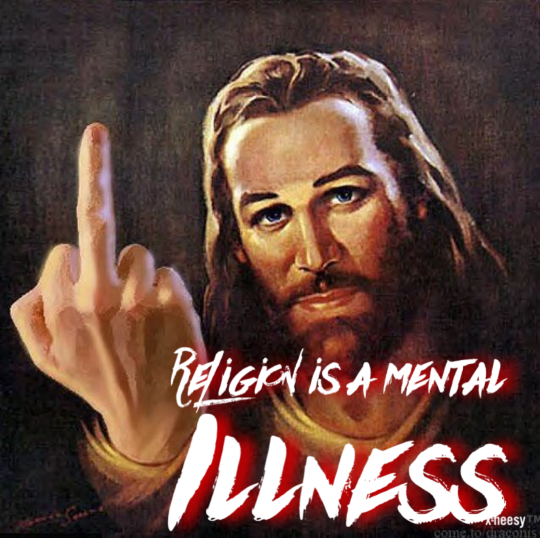
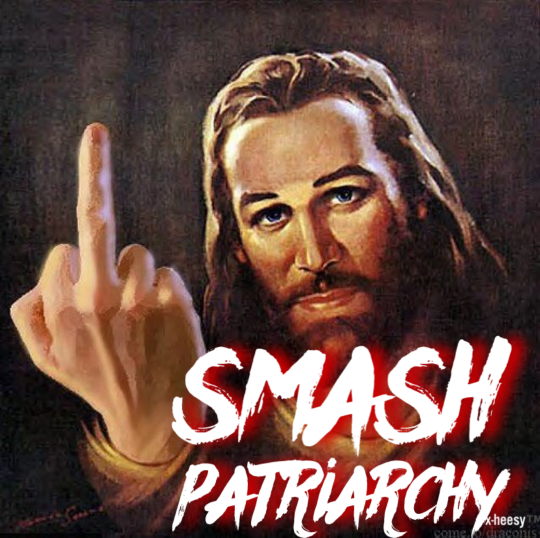






Nᴏᴡ ʏᴏᴜ’ᴠᴇ ɢᴏᴛ sᴏᴍᴇᴛʜɪɴɢ ᴛᴏ ᴅɪᴇ ғᴏʀ
Nᴏᴡ ʏᴏᴜ’ᴠᴇ ɢᴏᴛ sᴏᴍᴇᴛʜɪɴɢ ᴛᴏ ᴅɪᴇ ғᴏʀ
Iɴғɪᴅᴇʟ
Iᴍᴘᴇʀɪᴀʟ
Lᴜsᴛ ғᴏʀ ʙʟᴏᴏᴅ, ᴀ ʙʟɪɴᴅ ᴄʀᴜsᴀᴅᴇ
Aᴘᴏᴄᴀʟʏᴘᴛɪᴄ, ᴡᴇ ᴄᴏᴜɴᴛ ᴛʜᴇ ᴅᴀʏs
Bᴏᴍʙs ᴛᴏ sᴇᴛ ᴛʜᴇ ᴘᴇᴏᴘʟᴇ ғʀᴇᴇ
Bʟᴏᴏᴅ ᴛᴏ ғᴇᴇᴅ ᴛʜᴇ ᴅᴏʟʟᴀʀ ᴛʀᴇᴇ
Fʟᴀɢs ғᴏʀ ᴄᴏғғɪɴs ᴏɴ ᴛʜᴇ sᴄʀᴇᴇɴ
Oɪʟ ғᴏʀ ᴛʜᴇ ᴍᴀᴄʜɪɴᴇ
Aʀᴍʏ ᴏғ ʟɪʙᴇʀᴀᴛɪᴏɴ
Gᴜɴᴘᴏɪɴᴛ ɪɴᴅᴏᴄᴛʀɪɴᴀᴛɪᴏɴ
Tʜᴇ ғɪʀᴇs ᴏғ sᴇᴅɪᴛɪᴏɴ
Fᴜʟғɪʟʟ ᴛʜᴇ ᴘʀᴏᴘʜᴇᴄʏ
Nᴏᴡ ʏᴏᴜ’ᴠᴇ ɢᴏᴛ sᴏᴍᴇᴛʜɪɴɢ ᴛᴏ ᴅɪᴇ ғᴏʀ
Nᴏᴡ ʏᴏᴜ’ᴠᴇ ɢᴏᴛ sᴏᴍᴇᴛʜɪɴɢ ᴛᴏ ᴅɪᴇ ғᴏʀ
Sᴇɴᴅ ᴛʜᴇ ᴄʜɪʟᴅʀᴇɴ ᴛᴏ ᴛʜᴇ ғɪʀᴇ
Sᴏɴs ᴀɴᴅ ᴅᴀᴜɢʜᴛᴇʀs sᴛᴀᴄᴋ ᴛʜᴇ ᴘʏʀᴇ
Sᴛᴏᴋᴇ ᴛʜᴇ ғʟᴀᴍᴇ ᴏғ ᴛʜᴇ ᴇᴍᴘɪʀᴇ
Lɪᴠᴇ ᴛᴏ ʟɪᴇ ᴀɴᴏᴛʜᴇʀ ᴅᴀʏ
Fᴀᴄᴇ ᴏғ ʜʏᴘᴏᴄʀɪsʏ
Rᴀᴘɪɴɢ ᴅᴇᴍᴏᴄʀᴀᴄʏ
Aᴘᴏᴄᴀʟʏᴘᴛɪᴄ
Wᴇ ᴄᴏᴜɴᴛ ᴛʜᴇ ᴅᴀʏs
Oʜ
Wᴇ’ʟʟ ɴᴇᴠᴇʀ ɢᴇᴛ ᴏᴜᴛ ᴏғ ᴛʜɪs ʜᴏʟᴇ
Uɴᴛɪʟ ᴡᴇ’ᴠᴇ ᴅᴜɢ ᴏᴜʀ ᴏᴡɴ ɢʀᴀᴠᴇ
Aɴᴅ ᴅʀᴜɢ ᴛʜᴇ ʀᴇsᴛ ᴅᴏᴡɴ ᴡɪᴛʜ ᴜs
Tʜᴇ ʙᴜʀɴ��ɴɢ ʜᴏᴍᴇ ᴏғ ᴛʜᴇ ʙʀᴀᴠᴇ
Bᴜʀɴ
Nᴏᴡ ʏᴏᴜ’ᴠᴇ ɢᴏᴛ sᴏᴍᴇᴛʜɪɴɢ ᴛᴏ ᴅɪᴇ ғᴏʀ
Nᴏᴡ ʏᴏᴜ’ᴠᴇ ɢᴏᴛ sᴏᴍᴇᴛʜɪɴɢ ᴛᴏ ᴅɪᴇ
Fᴏʀ
Nᴏᴡ Yᴏᴜ’ᴠᴇ Gᴏᴛ Sᴏᴍᴇᴛʜɪɴɢ ᴛᴏ Dɪᴇ Fᴏʀ ʙʏ Lᴀᴍʙ ᴏғ Gᴏᴅ @invincible-selfxmade-punk @wayward-cat @frenchpsychiatrymuderedmycnut @bigbonzo @necro69mancer

#jesus loves you#???#x-heesy#my art#my memes#artists on tumblr#2/2024#dark memes#dirty humor#satire#fuckit#You should not kill mfz#religion#religion is a mental illness#pro life#our whole system is very very wrong 😑#question everything#smash patriarchy#live and let live#love and let love#Punks aren’t dead#death metal#lamb of god#meme#memes#cheesus#typography#pop art#neo pop art#now playing
25 notes
·
View notes
Text
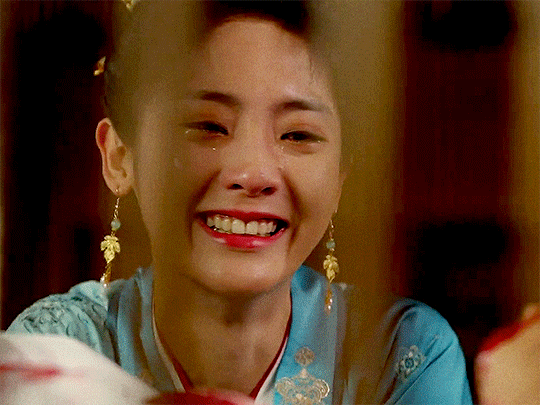

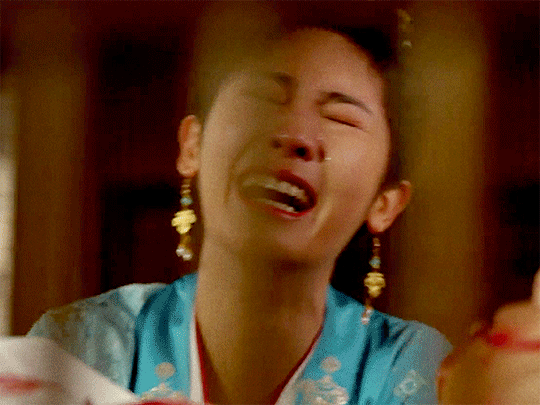
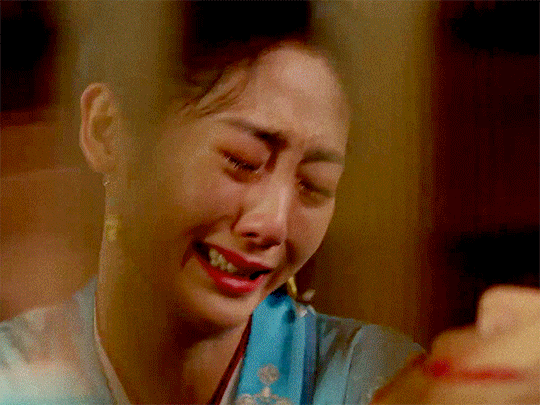
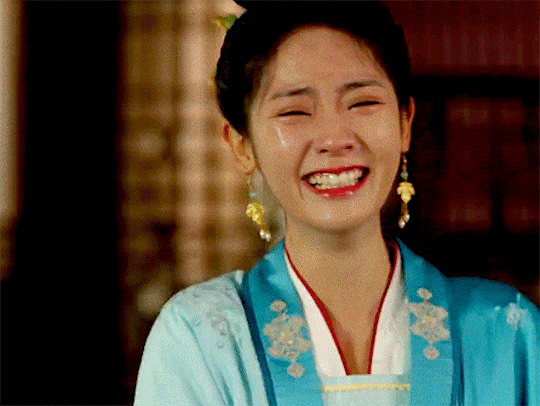
do you remember the shadow play I told you about? the woman in the story - she's me. but would you have believed me if I had told you? you might have thought I was crazy. because I sometimes think I've gone mad too.
邢菲 XING FEI as 陆安然 LU ANRAN | 覆流年 Lost Track of Time EP. 27
#覆流年#lost track of time#cdramagifs#cdramanet#asiandramanet#cdramasource#dailyasiandramas#cdrama#xing fei#flngifs#jielin's edits#my posts#i think about this scene a lot and this is one of the days#xing fei killed it! oh the devastation. the resignation#very emotional about the kind of fem protagonist anran is written as!!!!#allowed to be smart and competent (beyond what is expected of her as a girl). allowed to yearn for love and belonging#which were blessings and disasters coming hand-in-hand for her#she couldn't have changed anything about herself to prevent whatever happened bc it was never her fault#if you must. blame the patriarchy and obsessive political competition that came in the form of mu ze#she died and she came back wrong.#if you want a woman's perspective to the kind of introspective chinese character tragedies of xdq and lxy then it would be anran's#(every single time i revisit this scene and when i get to the end of it 🙂#i'm like wow i fucking hate mu chuan for pulling this shit on her 🙂)#nobody cares about this show on here it's ok it's fine i'm ok.
38 notes
·
View notes
Text
radical facts - short feminist facts
#medical misogyny
Misdiagnosed & Mistreated - Misogyny & Androcentrism in Medicine
Although it is a well established scientific fact that the female body acts and reacts medically often very different than the male body, these differences get widely ignored. This widespread misogyny and androcentrism in medicine frequently gets women misdiagnosed and mistreated, which often proves deadly.
Studies found that females presenting with a heart attack were more likely to die when a male doctor treated them, compared with a female doctor.
Women are also 50% more likely to get their heart attack misdiagnosed - for their (typical to females) symptoms get seen as atypical and often dismissed; based upon only male symptoms getting seen as typical and indicative.
Female patients are also less likely to be prescribed preventative treatment after an initial attack.
Women are half as likely as men to receive pain killers after surgery.
When getting surgery, women have a 32% higher risk of dying - when operated on by a male surgeon.
They also have to wait longer to receive pain management medication in emergency rooms as well as often simply getting sedated instead of recieving pain management. No such effect is seen in male patients.
Female patients generally have to wait for significantly longer timespans to get a diagnosis. Per example, it takes typically 2.5 more years for a woman to be diagnosed with cancer and 4.5 more years for a diabetes diagnosis compared with men. In total, women were found to get diagnosed much later in more than 700 diseases compared to men.
#radical facts#medical sexism#feminist facts#medical misogyny#medicine#healthcare#healthcare system#systemic misogyny#androcentrism#female health#female reality#misogyny kills#misogyny#patriarchy#patriarchal society#androcracy#systemic inequality#male as default#female is not just “non-male”#feminism
28 notes
·
View notes
Text
i saw that review on letterboxd of all the rhetorical questions for barbie and like… the more i think abt it, the more i’m certain that the review’s author fundamentally misunderstood the film. barbie land is not a utopia in the way that adults would think abt a utopia, like the author seems to imply… barbie land is canonically shaped by little girls playing with their dolls. that’s why we see a supreme court. thats why there are nobel prizes and authors and lawyers (also because that’s how the toys are marketed… would there be a mermaid in ur utopia??? there would be in mine!). that’s why barbie and ken don’t necessarily know what a boyfriend and girlfriend are “meant” to do (not to mention that the author’s assumption that sex is fundamental to a romantic relationship is problematic at best). that’s why barbie is indifferent to ken (i personally had the life size barbie and my sister had the barbie dream house—we had the working woman barbie game, i had the genie barbie gameboy game, we had countless barbie dolls; we didn’t own a single ken doll lol). barbie land is a world created by and for little girls as they play with their dolls (she says in a comment on the original post “don’t little girls play with their dolls in a sexual way?” and yeah, sure, some do. but i didn’t and i’m sure there are others who didn’t… just like there are some girls who completely mutilated their own dolls and made them into horrifying creatures)… that’s why stereotypical barbie starts having an existential crisis—because a grown woman begins to play with her doll again and starts reshaping barbie land… we, as the audience, are meant to understand this as an outlier to how barbie land is canonically created. the author also calls ken “crass” and “slovenly”… maybe after he builds the patriarchy in barbie land he becomes “crass” but i wouldn’t call him slovenly at any point in the film (i suppose this is just semantics tho).
also, please stop saying that barbie land is a reversal of the real world. it isn’t, even if that may have been the filmmakers intentions. again, barbie is indifferent to ken. she does not abuse him, she does not treat him like he exists to service her by cooking or cleaning or providing other favors for her… barbie does not oppress ken in the way that men oppress women in the real world (we have no idea if he owns property or where he lives and she doesn’t seem to particularly care—extremely different from the fact that women couldn’t have their own bank accounts or credit cards, get a mortgage on their own or divorce their husbands through no fault divorce until the second half of the 20th century in the us… within a lot of our mothers and grandmothers lifetimes!!!!) and it is a complete disservice to conflate or equate the two. we actually see barbie drawing clear boundaries around her time and space in regards to ken—this is not a reversal of misogyny as women and girls experience it in the real world, by any stretch of the imagination.
is the film perfect or revolutionary or radical? of course not. it was produced by major studios and corporations in hollywood. of course the barbie movie is a fucking commercial for barbie, like… to expect anything different is just extremely dumb on your part if u saw the trailer, saw the marketing, saw the interviews, bought a ticket, and sat ur ass in the theater, like be fuckin serious. but don’t do women and girls a disservice by discrediting the world and thoughts and ideas it could open up for them by seeing themselves be taken seriously on screen in a major summer blockbuster with stupid fucking questions because u want to feel superior to everyone else because YOU and ONLY YOU see through the capitalist marketing of lipstick pop girlboss feminism (especially when juxtaposed with the way the female characters are treated in oppenheimer, which we cannot help but compare to the barbie film with the viral marketing of barbenheimer).
#i had to block a bunch of people so their barbie takes would stop showing up in my for you tab lol#i just wanna read steddie fanfic and reblog cute barbie gifs not see ur lame ass takes abt how barbie is evidence that both patriarchies#AND matriarchies are bad#there is not a society on earth where women treat men the way women have treated women for millennia… even the matriarchies smh#the way men have treated women*** literal smh!!!!#barbie spoilers#tagging this as barbie spoilers but not using the barbie tag bevause i don’t want to get into all that tbh#i’m just frustrated… esp as someone who teaches film#every time a female led film comes out we have to have these same convos over and over#let’s talk abt how oppenheimer glorifies the atomic bomb and doesn’t acknowledge the indigenous populations that the bomb was tested on!!!!#let’s talk abt how oppenheimer doesn’t even acknowledge the japanese experience of the bomb!!!! bevause oppenheimer is the real victim#let’s talk abt how christopher nolan repeatedly uses the trope of mentally ill suffering crazy woman to propel his male protagonists story!!#he’s just so sad :( that he killed thousands of ppl :(#anyways i’m over it lol#ok wait making this non rebloggable bevaude i don’t wanna argue w anyone i literally jus wanna say my piece into a void 🙏
49 notes
·
View notes
Text
hotd and hotd behind the scenes being like “yeah we’re showing that men in westeros want to keep power at all costs, even choosing a male heir who doesn’t want the crown over a female heir” and yknow “they preferred viserys even tho he doesn’t have what it takes to be king” blah blah blah
and AGAIN, it just invalidates got’s ending EVEN MORE.
yknow, the same ending where the writing deemed daenerys “crazy” for wanting the throne and power, and where THE MALES wanted to give said throne and power to either jon snow or bran stark, neither of whom wanted it
#house of the dragon#game of thrones#daenerys targaryen#anti got#IM JUST LIKE?????????#this show is just making everything more questionable by the minute#JUST COME AND SAY IT#THAT GOT'S ENDING WAS UTTER HORSESHIT#so literally what hotd is telling me is that#that patriarchal horrible circle that hotd is denouncing#was not destroyed at all#but WON at the end of got#killed daenerys#and just prospered#OK.#yay patriarchy heh??
291 notes
·
View notes